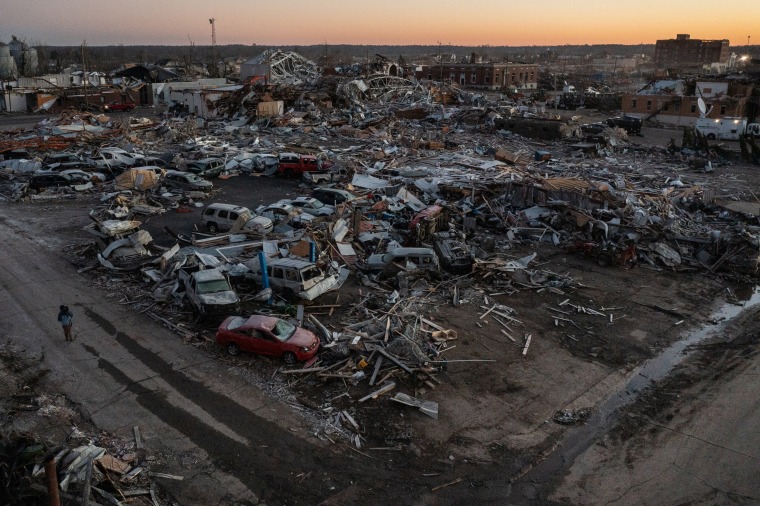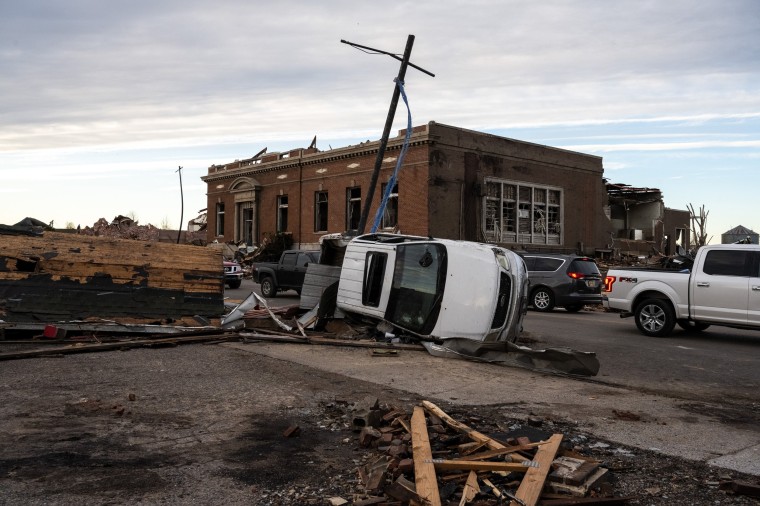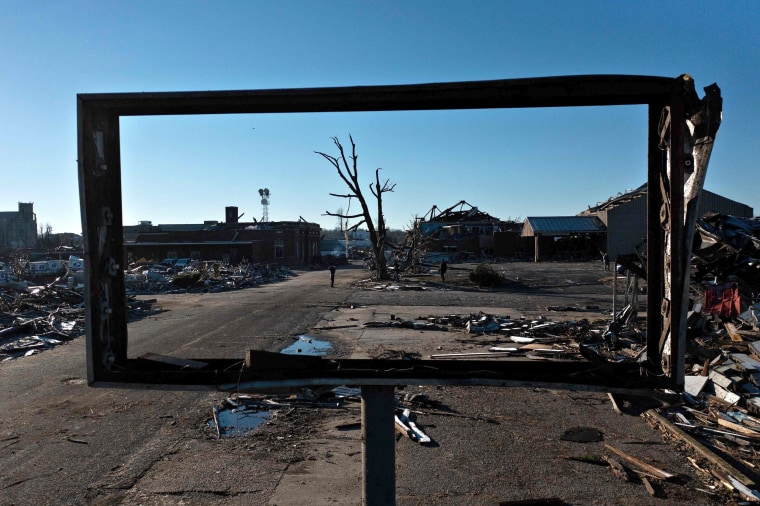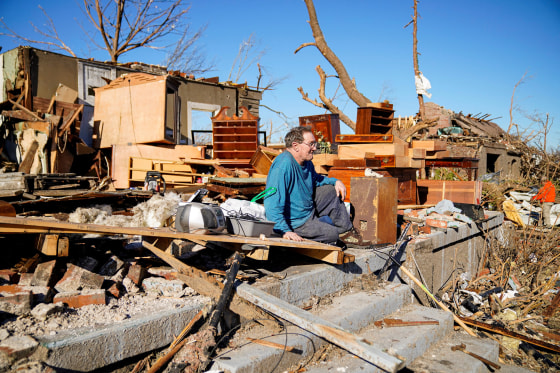The tornadoes that ripped through parts of the South and the Midwest over the weekend had all the trappings of devastating storms that typically strike at the height of tornado season in the spring. Only this time, disaster came just weeks before Christmas.
The rare December tornadoes that tore through Kentucky, Missouri, Illinois, Tennessee and Arkansas were shocking in their intensity and their timing, experts said. And they were the kinds of violent storms that raise worrisome questions about what extreme weather events may look like in a warming world.
"The heat and humidity across the South was pretty uncharacteristic for this time of year," said Victor Gensini, an associate professor of atmospheric sciences at Northern Illinois University. "I remember waking up, looking at the weather maps and saying, 'Geez, this looks a lot more like late April than mid-December.'"
The unseasonable warmth helped fuel volatility in the atmosphere that can generate strong thunderstorms. Together with La Niña, a naturally occurring climate pattern that creates favorable storm conditions across the South, conditions were ripe to spawn intense tornadoes, Gensini said.

"It was certainly 'Goldilocks' conditions that all came together," he added.
The effects of global warming on extreme weather are a major focus of research, as climate change is expected to worsen events such as heat waves, droughts, hurricanes and wildfires. The impact of global warming on the frequency and intensity of tornadoes is less well known, but experts say climate change is loading the dice for severe storms by creating the right environments and atmospheric conditions for tornado outbreaks.
La Niña patterns also tend to create a wavier-than-usual jet stream, which adds to atmospheric instability. La Niña years have historically been associated with increased tornado frequency across the Mississippi Valley.
A more volatile atmosphere in essence increases the chances of severe weather events, said Jason Furtado, an associate professor of meteorology at the University of Oklahoma. What's surprising, he said, is that the ingredients to fuel intense tornadoes coalesced so late in the year.

"Conditions over the weekend were much more like what you would see in the spring," he said. "That's key here. We're seeing these environments that can support tornadic activity."
Climate change is probably also playing a role, although scientists said it's more challenging to tease out the impacts of global warming on tornadoes compared to other extreme weather events, such as heat waves or hurricanes.
That's because tornadoes — even ones with very long tracks — usually affect relatively small swaths of land, Furtado said. They also tend to be short events, typically lasting only a few hours.
"A heat wave could be over hundreds or maybe thousands of kilometers, and they go on for much longer," he said. "So we can have climate models and run simulations for these large-scale phenomena."
There are signs that climate change may be affecting where tornadoes are likely to occur — and when.

Studies have shown that "Tornado Alley," an unofficial designation for the region where the most damaging tornadoes are likely to strike, is shifting east. The term typically encompasses the area from Texas and Oklahoma to the southern Plains and into the Upper Midwest, but experts say tornadoes are increasingly occurring in parts of the Mississippi Valley.
"We're seeing more events that are occurring off-season and occurring in different sections of the country than we traditionally expect to see tornadoes," said Christopher Weiss, a professor of atmospheric science at Texas Tech University. "That is concerning."
More research is needed, but scientists are eager to understand how climate change influences the ingredients that create tornadoes — from temperature to humidity to wind — and what the outcome will be in the frequency and intensity of such storms.
While it's difficult at the moment to draw direct links between tornadoes and climate change, the impact of warming temperatures is undoubtedly a key piece of the puzzle, Gensini said.
"It's kind of like major-league baseball during the steroids era," he said. "If you look at batting averages during that time, you couldn't say for certain that steroids caused a particular home run, but it's pretty clear that steroids were playing a role."


